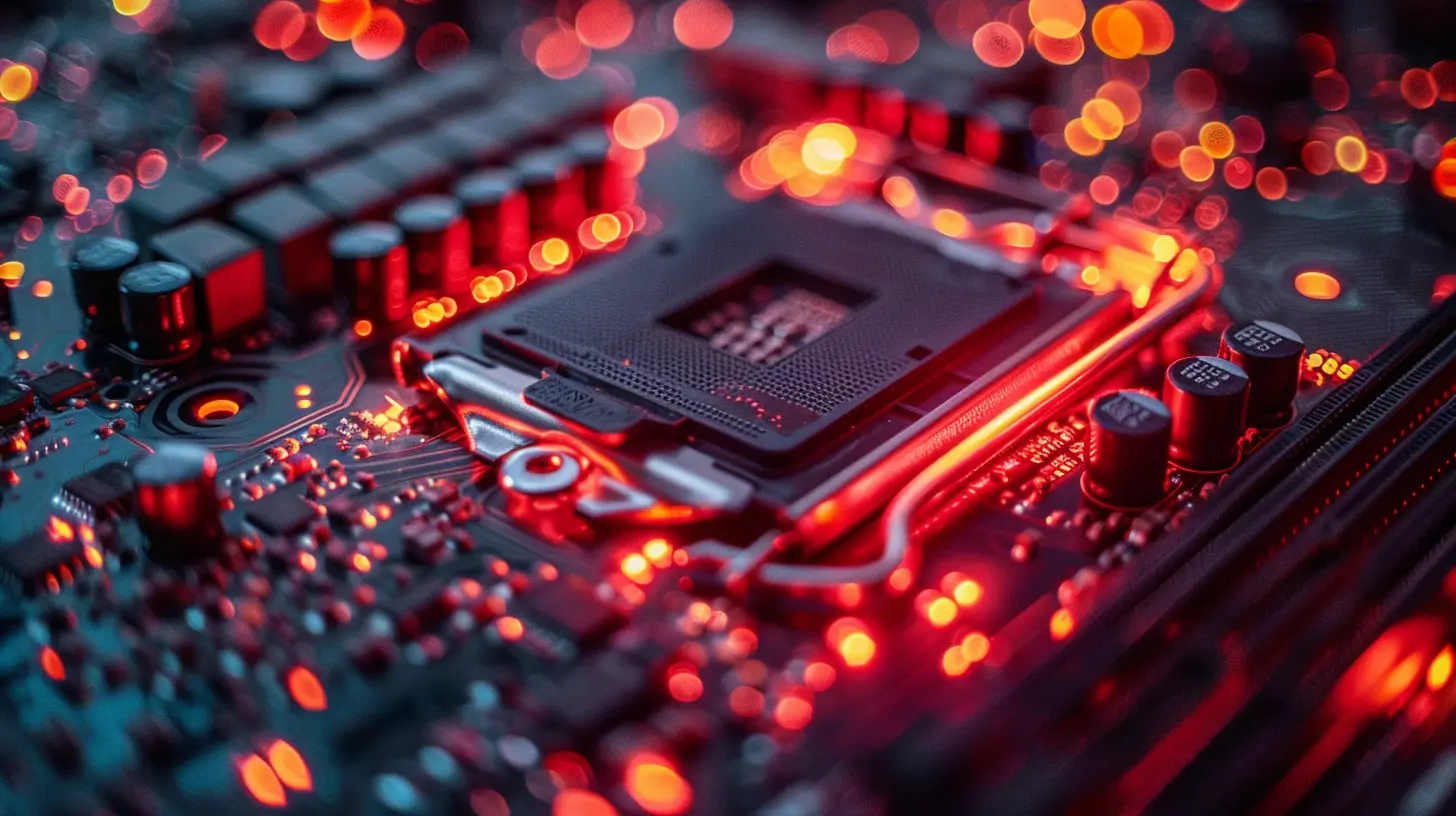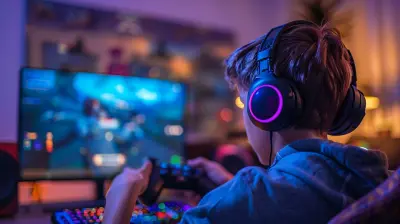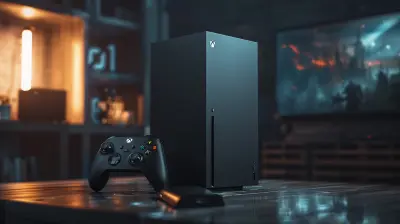22 March 2025
If you're a gamer stuck with a low-end system, you probably know the struggle of choppy gameplay. Nothing kills the joy of a good gaming session like watching your favorite game turn into a slideshow. It's like trying to run a marathon with ankle weights—you’re trying your best, but your PC just can’t keep up. Don’t worry, though. You don’t need a NASA-grade computer to enjoy smooth gameplay. With a few tweaks and tricks, you can squeeze extra performance out of your old rig and get those frame rates up.
Let’s dive into the nitty-gritty of how to improve framerate on low-end systems. Buckle up, folks, because this is going to be a wild ride! 
What Is Framerate and Why Does It Matter?
Before we jump into the how-to, let’s quickly talk about why framerate even matters. Framerate (measured in frames per second or FPS) is the number of frames your system can display per second while running a game. Higher FPS means smoother motion, while lower FPS makes gameplay choppy and unresponsive.Imagine watching a movie where the actors move in stop-motion—it’s disorienting, right? That’s what gaming with low FPS feels like. Ideally, you want at least 30 FPS for playable performance, but 60 FPS is the sweet spot. 
Step 1: Lower In-Game Graphics Settings
Okay, let’s start with the easiest fix. Almost every game has a settings menu where you can tweak the graphics. If your PC is struggling, it’s time to turn down the eye candy.Focus on these key settings:
- Resolution: Lowering this has the biggest impact on performance. If 1080p (1920x1080) is too much, drop it to 720p (1280x720). Sure, it'll look a bit blurry, but you’ll get a nice FPS boost.
- Textures: Set it to medium or low. Textures eat up VRAM like a hungry dog devours treats.
- Shadows: Shadows look cool, but they’re resource hogs. Set them to low or turn them off entirely.
- Anti-Aliasing: This smooths out jagged edges, but it’s not worth the FPS hit. Turn it off or stick to the lowest setting.
- Post-Processing Effects: Motion blur, bloom, depth of field—these are nice to have but not necessary. Turn them off for a performance boost. 
Step 2: Update Your Drivers
Think of your graphics card drivers as the software that tells your GPU how to do its job. If they’re outdated, your GPU might not be working at its full potential.Go to the website of your GPU manufacturer (NVIDIA, AMD, or Intel), download the latest drivers for your card, and install them. It’s like giving your PC a shot of espresso—it’ll wake things up.
Pro tip: If you’re not sure how to do this, there are tools like NVIDIA GeForce Experience or AMD Adrenalin that can handle updates for you. 
Step 3: Close Background Applications
Do you have a bunch of unnecessary apps running in the background? They’re like barnacles on a ship, dragging your system down. If you’re gaming, close anything you don’t need—browsers, music players, Discord (unless you're using it to chat while gaming), and even Windows features like OneDrive syncing.Open Task Manager (Ctrl + Shift + Esc on Windows) to see what’s running and kill off anything hogging resources. You’ll be surprised how much this can help.
Step 4: Tweak Windows Settings for Performance
Windows itself can sometimes be the culprit behind poor performance. Here are a few things you can do to declutter your operating system:- Adjust Visual Effects:
1. Press Win + R, type `sysdm.cpl`, and hit Enter.
2. In the Performance section, select "Adjust for best performance."
3. This will turn off unnecessary animations and make your system snappier.
- Game Mode:
Windows Game Mode prioritizes gaming tasks over background processes. Press Win + I, navigate to "Gaming," and make sure Game Mode is turned on.
- Power Plan:
Open Control Panel > Power Options and switch to the "High Performance" plan. It uses more energy but ensures your CPU and GPU are running at full tilt.
Step 5: Use Performance-Boosting Software
There are a bunch of third-party tools designed to optimize PC performance. Programs like Razer Cortex or MSI Afterburner can help you free up system resources, monitor temperatures, and even tweak GPU settings for better performance.But don’t go overboard with these tools—they’re like hot sauce. A little can spice things up, but too much can ruin the dish (or in this case, your system).
Step 6: Overclock Your Hardware
Feeling brave? Overclocking your CPU or GPU can provide a noticeable performance increase. It’s like giving your hardware a turbo boost. However—and this is important—overclocking can be risky. If done incorrectly, it may overheat your components or shorten their lifespan.Use utilities like MSI Afterburner, Intel Extreme Tuning Utility (XTU), or AMD Ryzen Master to overclock safely. And always keep an eye on your temperatures! If your PC starts to feel like a space heater, dial it back.
Step 7: Clean Your PC (Literally)
When was the last time you cleaned the inside of your computer case? Dust buildup can clog fans and lead to overheating, which affects performance.Turn off your PC, open the case, and use a can of compressed air to blow out the dust. Also, make sure your fans are working properly. Cooling is essential for maintaining stable performance during long gaming sessions.
Step 8: Upgrade What You Can
Sometimes, there’s only so much you can do to improve performance without upgrading your hardware. Before you panic about the cost, hear me out—some upgrades are surprisingly affordable.- RAM: Adding more RAM is one of the easiest and cheapest upgrades. Many games today recommend at least 8GB, but 16GB is where things really shine.
- SSD: If you’re still using a mechanical hard drive, upgrading to an SSD can drastically improve load times and system responsiveness.
- Second-Hand GPUs: If you can’t afford a brand-new graphics card, check the second-hand market. Older GPUs like the GTX 1050 Ti or RX 570 are budget-friendly and still pack a punch for low-end systems.
Step 9: Optimize Individual Games
Some games have hidden settings files (usually in their “Documents” folder) that let you tweak them even further. Look for Config or INI files and search online for optimization guides tailored to your specific game.Also, consider mods like “performance-enhancing mods” from platforms like Nexus Mods or Steam Workshop. For instance, some Skyrim mods can reduce the strain on your system while still keeping the game looking decent.
Step 10: Accept the Limits
Let’s be honest—there’s only so much you can expect from older or underpowered hardware. Sometimes you have to compromise. Play less demanding games or lower your expectations for newer titles. There are plenty of indie gems and older classics that run great on low-end systems.Remember, gaming isn’t just about graphics—it’s about the experience. Whether you’re slaying dragons, racing cars, or building cities, the fun comes from the gameplay, not the resolution.
Conclusion
Improving your framerate on a low-end system might take a bit of effort, but it’s totally doable. With a handful of tweaks, some careful upgrades, and a little patience, you can enjoy smoother gameplay without breaking the bank.So, grab a snack, roll up your sleeves, and start tinkering. Sure, a high-end gaming PC would be nice, but with these tips, your low-end rig can still pack a punch where it counts.






Zeke Barrett
Want your game to run smoother than butter on a hot skillet? Try these tips! Remember, a low-end system can still shine—just like a diamond in a pile of potatoes!
April 1, 2025 at 3:52 PM